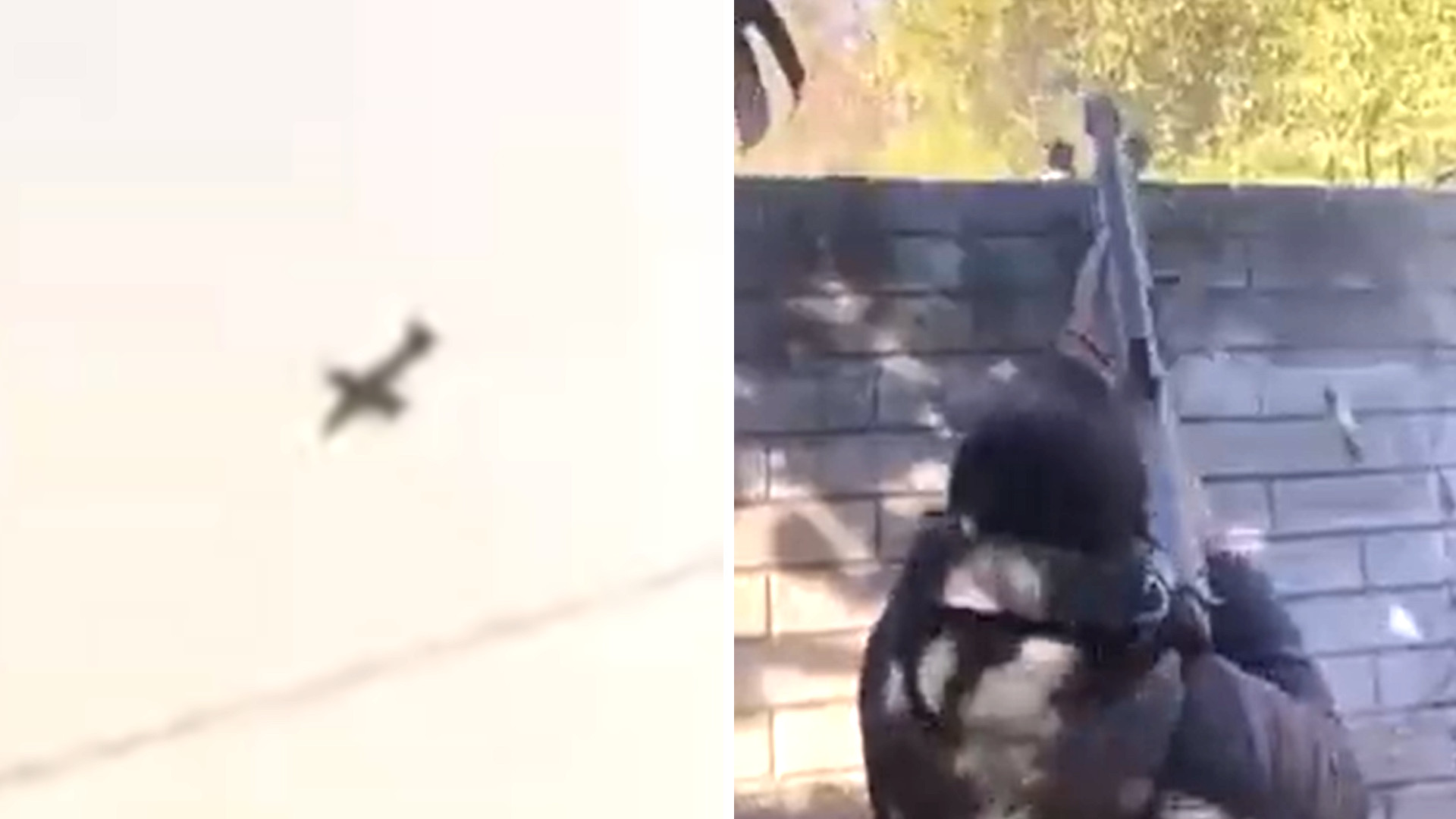A video has emerged that reportedly shows an armed Mexican military light single-engine turboprop aircraft conducting a strafing run against elements of the Sinaloa Cartel in the city of Culiacán earlier today. In other footage, members of the cartel appear to be seen firing Barrett .50 caliber anti-materiel rifles and other small arms at unseen aircraft.
Culiacán has been turned into a war zone following a pre-dawn Mexican government raid that led to the arrest of Ovidio Guzmán López, one of the sons of former Sinaloa Cartel kingpin Joaquin “El Chapo” Guzmán, who is now alleged to be a top leader in the organization. El Chapo is currently imprisoned in the United States. Ovidio has reportedly already been taken to Mexico City, which is situated some 650 miles southwest of Culiacán. At the time of writing, fighting between government and cartel forces appears to be continuing.
It’s not immediately clear from the video clip what type of aircraft carried out the apparent strike, but it would appear to be either a Beechcraft T-6C+ Texan II or a Pilatus PC-7. The Mexican Navy, at least, reportedly acquired FN Herstal HMP250 gun pods, each containing a single .50 caliber M3P machine gun, for use with its T-6C+s. The country’s Air Force also flies T-6C+s, as well as similar-sized PC-9s and PC-7s, the latter of which can also carry HMP250s or unguided rocket pods. Mexican T-6C+s and PC-7s are both ostensibly trainers, but can also be employed in various other roles, including as light attack and surveillance platforms.



The use of Mexican military aircraft to attack cartel forces is not new, but such operations have been more typically carried out using helicopters in the past. Another video clip has also emerged showing what could be a Mexican military helicopter firing a machine gun at cartel forces on the ground in Culiacán.
The video below, which is similar to the one reportedly taken today in Culiacán, shows a Mexican Navy helicopter firing on a car carrying Juan Francisco Patrón Sánchez, also known as “El H2,” a top leader in the Beltrán-Leyva Organization cartel, in 2017.

Any kind of airstrike in a dense urban environment runs the risk of causing collateral damage. However, strafing runs would allow for more focused fire on smaller targets compared to unguided rockets.
Online flight tracking software has indicated that Mexican military surveillance and reconnaissance aircraft, including a Mexican Navy CN-235 Persuader maritime surveillance plane and a specially configured Mexican Air Force Beechcraft King Air, have been orbiting over the city today, as well. This would make good sense both for supporting the initial raid and monitoring subsequent movements by cartel forces.
It’s not clear whether cartel members were able to score any hits on any government aircraft flying overhead. An Aeromexico Embraer ERJ-190LR airliner, with crew and passengers aboard, was hit by gunfire during its takeoff run at Bachigualato Federal International Airport in Culiacán. A statement from Aeromexico said no one was injured.
There is a possibility that the gunfire at the airport could have been an attempt to prevent the transfer of Ovidio to Mexico City. Two Mexican Air Force Boeing 737 passenger aircraft were tracked online flying to Culiacán after this morning’s raid, at least one of which was subsequently spotted on the ground. Those aircraft departed shortly after arriving and then headed southwest.
On the ground, Mexican government security forces have been fighting cartel members – including some who appear to be wearing Mexican military and National Guard uniforms – armed with various rifles and machine guns. This includes more Barrett rifles and even .50 caliber M2 heavy machine guns mounted on improvised armored trucks. The Sinaloa Cartel has been using those vehicles, sometimes referred to as “Narco Tanks,” which you can read more about here, along with various pickup trucks and SUVs to move personnel around the city and to set up roadblocks.
The Sinaloa Cartel’s forces heavily employed Narco Tanks and .50 caliber Barrett rifles, among other weapons during fighting in 2019 in Culiacán after a previous attempt to detain Ovidio, along with another one of his brothers, Joaquín Guzmán López. That operation triggered a similar running gun battle. With the fighting showing no signs of slowing, Mexican President Andrés Manuel López Obrador had ordered the release of both men, saying it was necessary to “protect the lives of the citizenry.”
For decades now, Sinaloa and other Mexican drug cartels have been significantly expanding their arsenals and other capabilities. Among other things, some cartels have been using small commercial drones loaded with improvised explosive payloads to carry out attacks. In many cases, these organized criminal organizations have become almost like small military forces, as can be seen in the video below showing members of the Cártel de Jalisco Nueva Generación (CJNG), or Jalisco New Generation Cartel, in 2020.

Obrador, more commonly known in Mexico and elsewhere by the nickname ‘AMLO,’ has been president since December 2018. He won his initial election after running on a populist platform that included a pledge to tackle drug cartels through “abrazos, no balazos,” or “hugs, not bullets.”
Today’s apparently successful arrest of Ovidio comes as Obrador is set to meet U.S. President Joe Biden next week. Border security and counter-drug efforts are all but certain to be major topics of discussion between the two leaders, among other things.
In the meantime, it remains to be seen how the situation in Culiacán will continue to evolve and whether more Mexican military aircraft will end taking part in the fighting.
Updated 5:55 P.M. EST:
There is now an unconfirmed report that members of the Sinaloa Cartel forces were able to force a Mexican Air Force C-295 light cargo aircraft to make an emergency landing in Culiacán after shooting at it. It is unclear what damage the aircraft may have actually sustained, but a video circulating on social media shows an airport crash truck spraying it with water.
Contact the author: joe@thedrive.com
